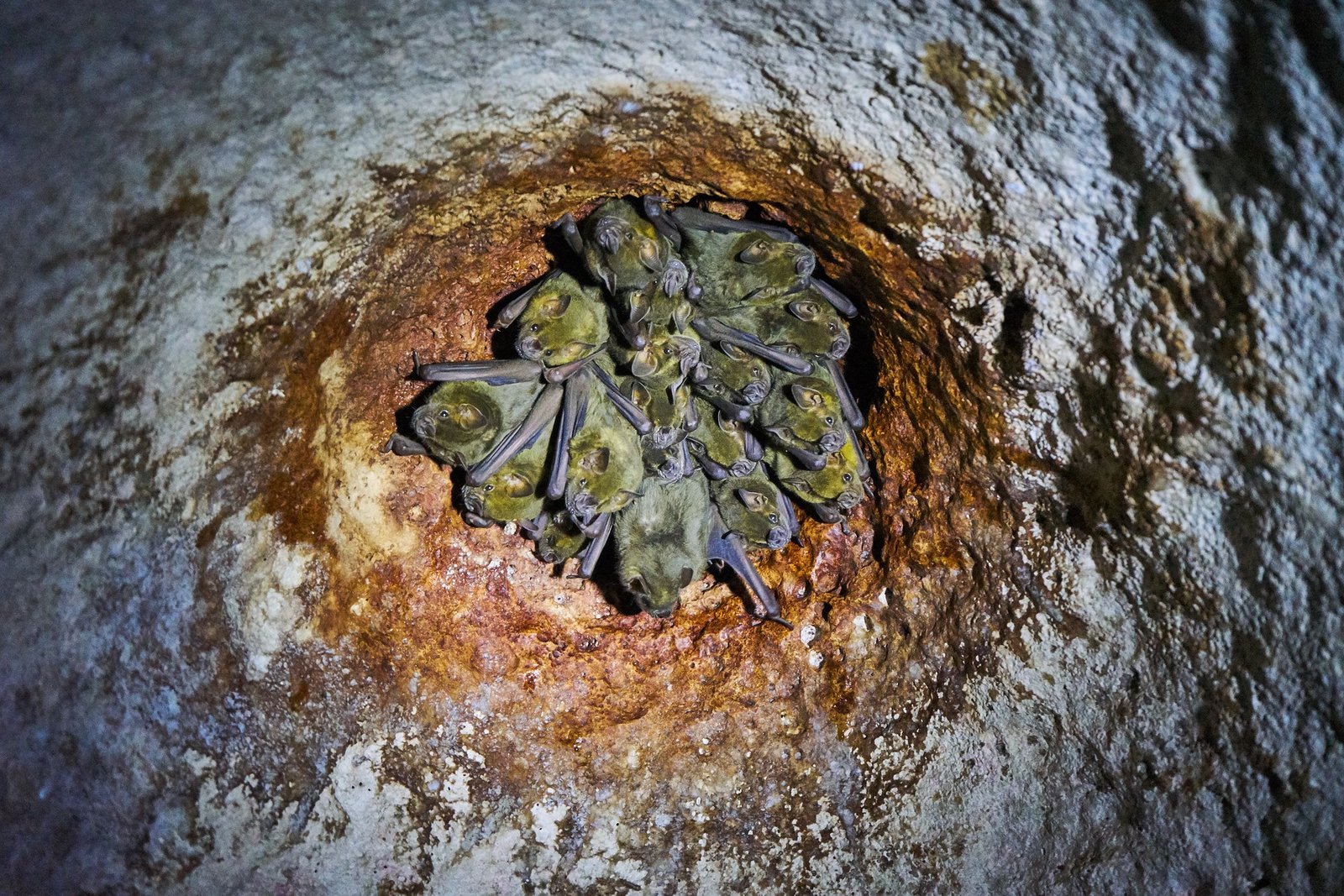Cave Myotis: Myotis Velifer

Description Of Cave Myotis Bats
The cave myotis is considered a larger bat. Females tend to be larger than males in size.
The species’ coat color varies based on where the bats live. Those in eastern populations have a reddish-brown colored coat with a pale underbelly. Cave myotis bats from the west are almost entirely black in color.
Learn More: Small Bat Species
Size Of The Average Cave Myotis Bat
- Total Weight: 12-15 g
- Total Length: 90 mm
- Tail Length: 40mm
- Forearm Length: 42mm
- Foot Length: 9mm
Cave Myotis Habitat
This is a colonial, cave-dwelling bat that typically roosts in clusters of thousands. In rock cracks, old buildings, carports, under bridges, and even in abandoned cliff swallow nests, they may also roost.
Cave myotis is second only to Tadarida brasiliensis on the Edwards Plateau in abundance and hibernates in winter in central Texas caves. It also hibernates in the Panhandle’s gypsum caves, where large-eared bats, Brazilian free-tailed bats, big brown bats, Yuma myotis, and ghost-faced bats are sometimes found.
Although these bats can roost at the same site, they usually segregate from different species, with other bats living in separate areas or rooms of the roosting site. 1Go To Source depts.ttu.edu -“CAVE MYOTIS Myotis velifer (J. A. Allen 1890)”
Cave Myotis Range
From central Texas and Oklahoma to New Mexico, Arizona, and California’s far southeast, these bats are found throughout the southwestern United States. Their range also extends into Mexico and Central America. 2Go To Source desertmuseum.org -” Animal Fact Sheet: Cave myotis bat”
Behavior Of The Cave Bat

Caves are the main roosts of this southwestern species, as its name implies, although it also uses mines, and sometimes buildings, bridges, and culverts. It is primarily a crevice dweller, preferring its underground retreats’ ceilings with crevices, pockets, and holes. It is also known that this species roosts in swallow nests.
Foraging over dense riparian vegetation and in drier desert washes has been reported by Cave Myotis. In Arizona, Kansas, and Mexico, dietary studies suggest that insects such as butterflies, moths, and beetles are typical prey. 3Go To Source tpwd.texas.gov -“Cave Myotis (Myotis velifer)”
Cave Myotis Reproduction Habits
Females usually give birth, usually around mid-April and May, to one offspring each year. Nursery colonies can contain up to 15,000 bats, but more common are colonies counting 1,000 to 5,000 bats.
When the adult females abandon their youth at the time of weaning, the nursery colony will break up. Until the next breeding, they will return to the males or reside in isolation.
The pups are kept with other newborns in nursery colonies, where they are nursed and protected by adult colony females. Such nursing colonies can become quite large. When they are five weeks old, the young will begin to fly. 4Go To Source animaldiversity.org -“Myotis velifer cave myotis”
Diet Of The Cave Myotis
Cave myotis bats capture their insect prey using echolocation. They are able to determine insect size and shape and distinguish objects such as trees’ limbs and leaves. The chitinous hard sections of insects are usually not consumed.
Foraging requires highly developed maneuverable flight and high metabolic energy, but, like other bats, the cave myotis has solved the complex demands for flight and energy. Light wings and long slender fingers linked by a thin skin membrane make bats’ flight remarkably well-adapted. 5Go To Source kars.ku.edu -“Cave Myotis Myotis velifer grandis Hayward”
Threats To The Cave Myotis Species
This bat is not an exception to the disease White-nose syndrome. White-nose syndrome is an emerging hibernating bat disease that has spread at an alarming rate from the northeast to the central United States. In 33 states, millions of insectivore bats have died from this disease since 2007. 6Go To Source usgs.gov -“What is White-nose Syndrome?”
Sources:
- Schmidly, David, and Robert Bradley. “A Species Account of the Cave Myotis (Myotis Velifer) | Mammals of Texas | Natural Science Research Laboratory | TTU.” Texas Tech University Natural Science Research Laboratory, University of Texas Press, 2016, www.depts.ttu.edu/nsrl/mammals-of-texas-online-edition/Accounts_Chiroptera/Myotis_velifer.php.
- “Cave Myotis Bat Fact Sheet.” Arizona-Sonora Desert Museum, Arizona-Sonora Desert Museum, www.desertmuseum.org/kids/bats/cave_myotis.php. Accessed 7 Jan. 2021.
- TPWD. “Cave Myotis (Myotis Velifer).” Texas Parks And Wildlife, Texas Parks and Wildlife Department, tpwd.texas.gov/huntwild/wild/species/cavemyotis. Accessed 7 Jan. 2021.
- Ismail, A. 2000. “Myotis velifer” (On-line), Animal Diversity Web. Accessed January 07, 2021 at https://animaldiversity.org/accounts/Myotis_velifer/
- Hayward. “Common Bats (Family Vespertilionidae).” KARS, The University Of Kansas, kars.ku.edu/media/kufs/libres/Mammals_of_Kansas/myot-velifer.html. Accessed 7 Jan. 2021.
- “What Is White-Nose Syndrome?” USGS, USGS Science For A Changing World, www.usgs.gov/faqs/what-white-nose-syndrome?qt-news_science_products=0#qt-news_science_products. Accessed 7 Jan. 2021.
